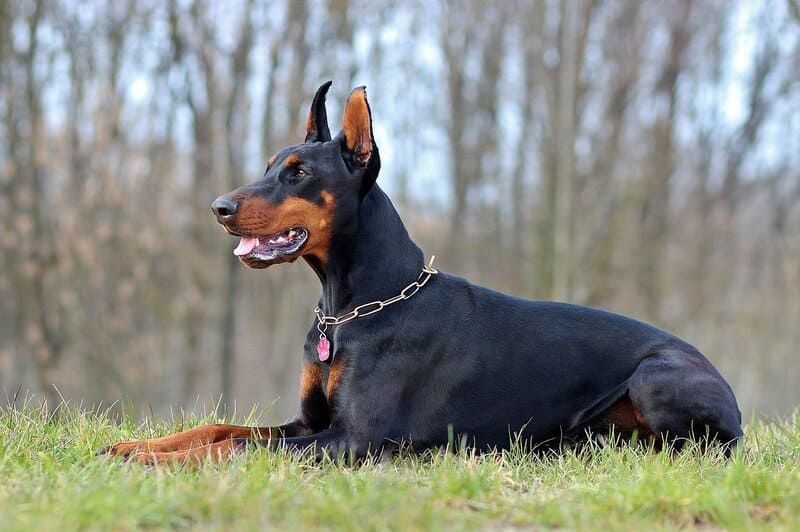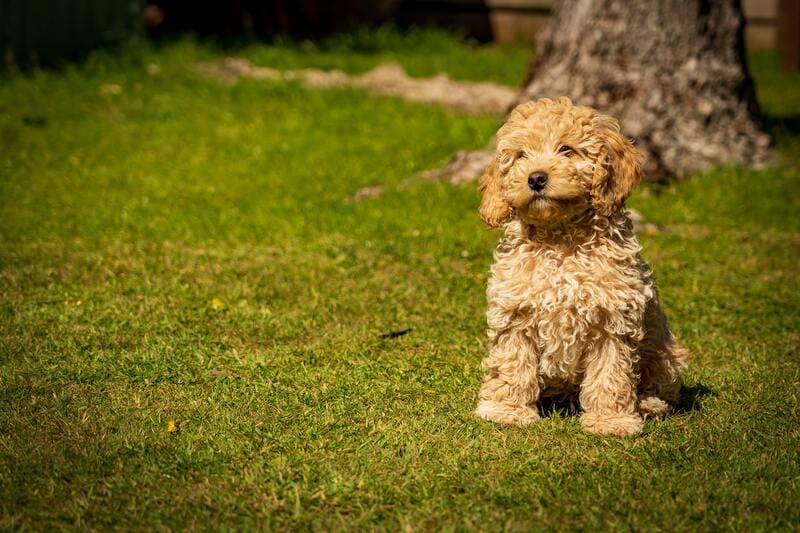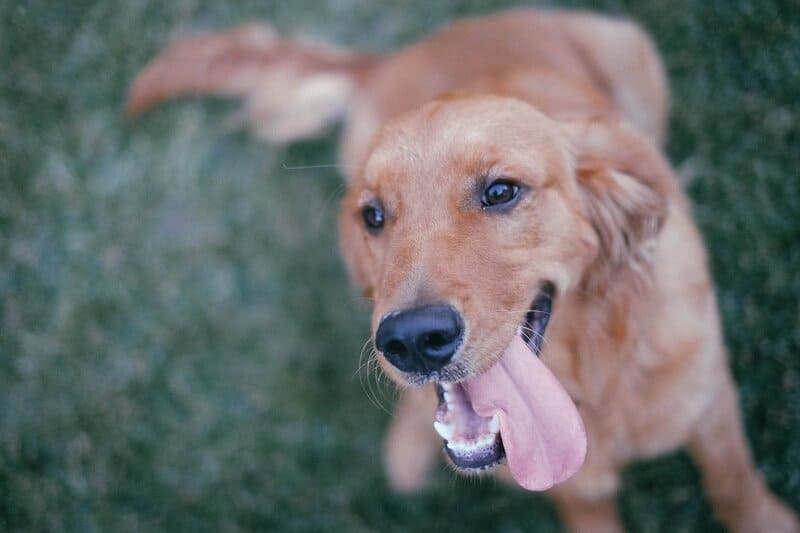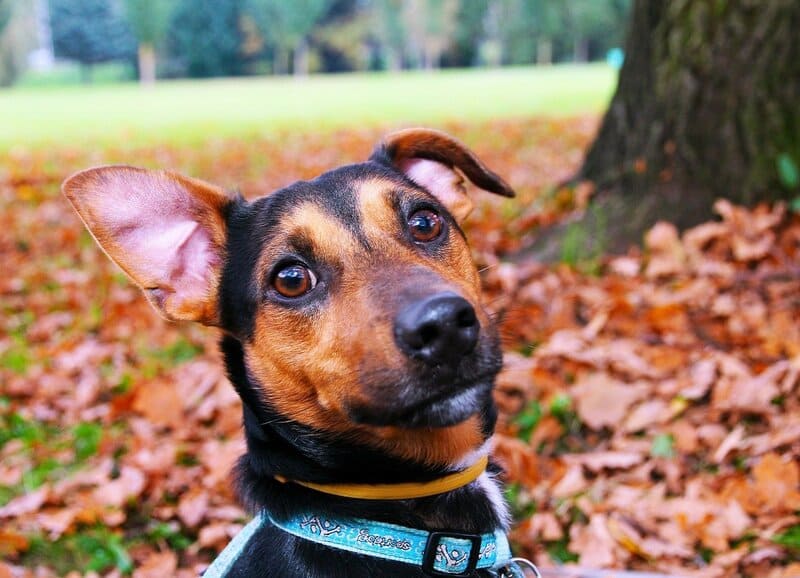The “stay” position is when your dog holds a stationary posture which is usually a “sit”, a “down”, or even a “stand up position. The main hallmark of the “stay” command is whenever your dog is given the cue he holds a statue-like position until the owner/ trainer releases him. Depending on the trainer, the release command could be an “okay” or a “yes”.
The goal is to extend the duration of this statue-like stance for as long as possible. Note that you will have to establish specific goals for you and your dog as to the length, the time, and the distance that you would like him to achieve for this command. This way your dog doesn’t get confused and will consistently be paying attention, and, even perform without any behavioral problems.
Why is “Stay” an important command?
Similar to “sit” (but not entirely), “stay”, is a useful feature in the overall obedience quotient of your pet. It is also a safety behavior that prevents door dashing when you have guests standing in the doorway.
It also teaches your dog some level of intelligible control over his bounding impulses to jump up and down even if he doesn’t recognize the human. And it will somehow save your dog and your friend the surprise of finding out that they have never met each other.
How to Train a Dog to Stay

Your dog must understand exactly what you mean when you give this command. He could be in any position for as long as he keeps the posture that you have trained him to stay in and hold.
The Three D’s of the “Stay” Command
- Stage 1: Training with Duration (time)
- Stage 2: Training with Distance (how far)
- Stage 3: Adding Distraction
There are 2 types of techniques to Teach “Stay” to Your Dog:
- “Stay”: You will find that most professional trainers might ask what type of “stay” you would like to have your dog learn. They’ll say, “Is it cued, or a no-cue stay?” We will differentiate between the two for a better understanding of these 2 options.
- The No Cue “Stay”: Also known as implied stay, this exercise involves two commands without having to verbally transition to “stay” after giving the first cue. Tell your dog “sit”, “down”, or maybe “stand”, and he will keep the position until you release him without ever having to say “stay”. Hence, “stay” is implied and understood on the first cue.
The Cued “Stay”
This type of stay is a hand signal and/or a verbal cue that means “hold that position”. This is given right after the first verbal cue of “sit”, down or stand. Some dog owners prefer to have a separate cue for “stay” since it gives the command greater emphasis, or maybe they just do it simply out of habit.
One possible disadvantage of using a separate command for stay is, if your dog moves out of position prematurely there is no error on his part. He just did not hear the cue or even saw your signal.
Basic Commands and equipment
- “Stay”: Given as a verbal cue or as a hand signal, this is to indicate that you want your dog to not step out of his statue-like position until you release him. This can be accompanied by a hand signal of an open palm facing outward similar to “stop”.
- “Sit”, “Down”, and “Stand”: This can be given as the replacement for the implied command for “stay”. Almost two seamless actions rolled into one command, “sit”, with “stay: staying silent.
- “Okay” or “Yes”: These are used as cues for releasing your dog from the stationary position.
- A long leash of at least 6-8 feet: Just let the leash lay on the ground as you train your dog, and you will only use it to stop your dog just in case he wanders off in a distance chasing some small animal like a mouse or a squirrel. Remember not to jerk the leash as dogs respond better to positive reinforcement rather than punishment.
- Your dog’s favorite treats and a treat pouch to keep the rewards within easy reach.
- Clicker (optional): It may come in handy for both a no-cue and cued training session.
Stage 1: Training on Duration

First, Find a Good Location
Finding a quiet location for your dog to train on his first day will start the “setting your dog up for success” mode. The less distraction from the place the better. You may also begin from your backyard with minimal stimuli that may confuse your dog. Attach the line or leash to your dog’s collar and just let it lay on the ground.
If your dog tends to be frisky and full of energy, you might want to teach him right after expending excess energy from your morning walk or maybe a simple game with his favorite squeaky toy.
Using the Non-Cue or Silent “Stay” Option
For this guide, we will be using “sit” as a replacement to imply the command “stay” without actually saying it. After giving the cue, release the dog by saying “okay” or “yes”. Note that you must establish a time gap between the initial command and the release cue.
Face your dog. Say “sit”, then your dog should have his hind legs folded and tucked behind him. His rear is lowered as it touches the ground and his head is tilted upwards, looking at you while giving his full attention.
Let him keep the “sit” position for a few seconds before releasing him. Then when he obeys, reward him with a treat and add some words of praise in a generally satisfied tone. Gradually increase the length of time between the initial cue and the release, adding 2 seconds per succeeding stay.
The time gap that you will be putting in may depend on the owner. Assuming that this may be your dog’s first time, you can try to go for a 3-10-second gap for his first day. And then, you can try to go for a 30-second “stay” in his first week. After that, you may want to add on for longer periods depending on your need.
Using the Cue “Stay” Option
Face your dog in whatever position he or she is in – standing up, or sitting down. Raise your hand with your palm facing outward as if to say “Stop”. Simultaneously say “stay”, then wait for your dog to respond with a statue-like stance. Your dog will then pay full attention to you and your body language. Wait 2-3 seconds before releasing him with an “okay” or “yes” then reward him with a treat.
You can also preempt “stay” with any of the commands “sit”, “down”, or “stand up”. Then, release as appropriate, with treats and praise to mark the behavior. Repeat the exercise until your dog gets used to having two successive commands and a release.
Increasing the Time Gap
Continue building up the time gap between “stay” and ‘okay until you reach at least a gap of 10 seconds for the day. Whenever possible you can try to make it a goal of a 30 second-stay for the week. Make the necessary adjustments and reduce the time if your dog is not responding correctly. If he can hold himself at least 5 times without moving, you can now proceed to the next step.
Stage 2: Training with Distance

This stage aims to create distance between you and your dog while giving the “stay” command
Increasing the Distance Between You and Your Dog
Assuming that your dog can already consistently perform the stay command, you can now begin creating the distance. Before you start, make sure that he already knows how to stay for at least 1 minute before adding distance. Ask him to stay and take a backward step one at a time.
Reward him every time he does the correct behavior. As you move farther away from your dog, make sure to go back to him to reward him with a treat. Don’t wait for him to break “stay” and go to you for the reward.
To make it a little easier for your dog to adjust, try to reduce the time gap as you increase the distance. Similar to increasing the time gap, adding to the distance must also be gradual. Depending on the kind of breed some catch on faster than others. So, try to observe your dog’s progress and build from there.
Training Tip:
You can vary the distance and time of the stay randomly to let your dog understand that in his release, what matters is the cue (and temporarily the treat.) No matter how many steps you take back or how long he stays on hold, he will always wait for the cue to be released.
Stage 3: Training with Distraction

Proofing Your Dog
After establishing at least 30 seconds of stay (or whatever your preference is), and at least 10 feet of distance, you can now start adding distractions. This is to test and at the same time have your dog get used to outside stimuli while holding a statue-like posture.
Use a toy that makes a sound while throwing it into the ground while your dog is holding a stay position. If he holds up, then reward him with a treat and verbal praise. At this point, while your dog is being challenged to control his impulses, you can give him additional treats for extraordinary performance.
You can also wave your hands, or maybe move around to try and distract your dog from his position. Again, if he doesn’t break, reward him.
Blind Spot
Attempt to move out of sight and see if he gets up from the hold. Make sure that you come back to your dog to reward him and not him coming to you to get the reward lest he becomes confused.
Change your Location
If you feel that after 1 to 2 weeks of training your dog may already have mastered the “stay” command, you can now bring him to other locations (sidewalk, park, etc.) to practice and perform.
Always remember: The goal is to make your dog stay even when he is distracted. And if he can do that, reward him by giving him a nice treat.
Related: How to Teach Your Dog to Sit on Command [Step-by-Step]
Troubleshooting Tips

Scenario: Dog keeps breaking from his “stay”.
Some Common Causes are:
- The trainer/owner might sound and look too excited to reward his dog that it causes his dog to get up from his stay. This results in a misunderstanding of what the reward is for. Be calm and consistent when rewarding your dog.
- You might be unknowingly rewarding your dog at the split second he breaks. Do not reward him for getting up and going to you, even if you already released him.
- The owner might take too long or might be too far causing his dog to break. Always gauge your dog’s confidence in completing the “stay” command based on the time and effort you both put into the training. If he is already used to longer times and distances, a long stay is okay. Otherwise, don’t leave him on hold for too long or he might get up and make a mistake. A timely follow-through of reward is sufficient.
Other Possible Causes
- It may be too early into the training as it may only be your dog’s first day out. Back up a little. Try to lessen the time gap between command and release and revert to shorter distances. Do this in small increments.
- Training sessions might be too long. A puppy can handle a few minutes per session while an adult dog is OK with 10 to 15 minutes.
Read also: How to Teach a Dog to Lie Down – A Complete Guide
What is the Difference Between “Sit”, “Wait”, and “Stay”?

While all of them require your dog to assume the stationary position, “sit” can be used as a temporary rest or even as a restraint for your dog to not rush strangers, or, to wait and focus on you for the next instruction. “Wait” on the other hand, is a 2-3 second quick hold for you to open the door, and or, your dog might just be waiting for his next instruction from you.
Lastly, “stay” is a longer hold that can last indefinitely depending on the situation. Your dog can “stay” for as long as 3 seconds to 30 seconds. This will also depend on the time and skill that he has acquired. Distance, in this case, is also a differentiating factor.
Read also: How to Teach a Dog to Settle – A Complete Guide
How many sessions does it take to train my dog?
- Adult dogs: It depends on the time you are willing to invest as it can take about 2-5 sessions a day with 10-15 minutes for each session
- Puppies: They can train 3x a day with at least 5 minutes per session since they have a shorter attention span
How Soon Can I Start Training My Puppy?
You can start training your puppy as early as 3-4 months, and do set your expectations that they have short attention spans as it will require more patience and attention.
Similarly, older dogs will require much patience because they also need to unlearn some habits that they picked up through the years before they can even learn new ones.
How Long Does It Take to Train a dog to stay?
For most experts, there is no hard and fast answer as to how long it takes for your dog to learn a basic command like “stay”. Some may say 2 weeks is a good measurement. however, there is this thing called recall that one might have to address.
You might have to retrain your dog after 2 weeks, just to make sure he retains the skills he learned.
Here are several factors that might affect your dog’s learning curve:
- Has he been previously trained using negative reinforcement, like an electronic collar, or maybe harsh correction with a training stick? Any punishment that has been used to stop a behavior is not as effective as when he is encouraged to learn a new one positively.
- Has he undergone any training?
- Are you teaching him the basics to overcome unruly behavior?
- How is your willingness to invest time and effort into teaching your dog some social skills? Do you have the time to revisit and retrain your dog for skills that he has already learned for the sake of better recall? Your dog may understand and perform tricks and commands within two weeks, but, you will have to make sure that he gets to remember them for a long time to come. And the only way you can do that is to spend some time training him all over again.
Related: How to Teach Your Dog to “Leave It”
A Few Tips on How You Can Optimize Time Frame for Best Recall

- Understand that your dog mainly remembers by association. He can remember the treats that he gets from you when he does a trick correctly. So, early on in the training session make sure you have treats on hand to reward him
- If you are aiming for a no-treats performance, gradually fade out the treats and replace them with a rub on the head, and or a nice-sounding “good girl”, or “good boy”. As much as dogs can remember the punishment, they remember positive associations too. You can cycle any one of these treats depending on how much your dog can remember.
It is known that training puppies for the basics like sit, stay, down, and so forth, results in better recall and sociability. They bring this all the way into adulthood which greatly benefits them and their owners. So yes, you can train your puppy for as early as 3 months.
On the other hand, training a senior dog is also possible as you will have to spend more time and patience too. Enough for him to unlearn old habits and learn new ones.
How Do You Teach a Stubborn Dog to Stay?
Teaching a stubborn dog in general will require extra patience and a firmer voice. This will apply to any verbal cue as well as the “stay” command.
Recommendations
- Come to training prepared with his favorite treats.
- Make it to a point to stand directly in front of him to establish authority and look at him in the eyes.
- Use a firm but cheerful voice when giving verbal instructions.
- Be generous with your rewards and praises for a job well done.
- Most importantly, don’t get discouraged. Be persistent in a gentle manner and just repeat the exercise if your dog is having difficulty following it.
- Follow through with rewards for any kind of progress that you may encounter.
How Do I Train My Dog to Stay Without Treats?
Just like any other training for your pet, using lures/treats is an almost indispensable way of having your dog learn tricks. If you are a first-time owner you will want to use treats in the beginning and fade it out over time depending on your dog’s progress. If you are an established trainer, you can train your dog without treats, using verbal and touch/tactile rewards instead.

